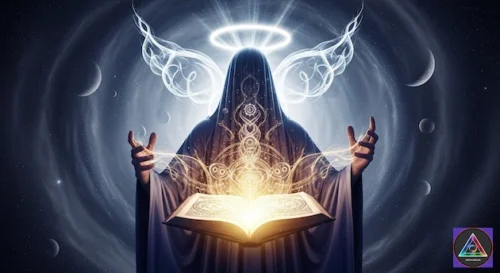
The term “Gnostic Gospels” refers to a collection of early Christian texts discovered in 1945 near Nag Hammadi, Egypt. These non-canonical writings are associated with Gnosticism, a diverse religious movement that flourished during Christianity’s formative centuries. What makes these ancient documents particularly captivating is their radical divergence from orthodox Christian doctrine—offering alternative narratives about Jesus, divine nature, and the human spiritual journey that continue to resonate with seekers today.
Historical Context: The Emergence of Gnostic Thought
To appreciate the spiritual significance of these texts, we must first understand their historical context. The early Christian landscape was far more diverse than commonly recognized, with numerous theological perspectives competing for legitimacy. Gnosticism emerged during this fluid period, absorbing influences from Platonic philosophy, Jewish mysticism, and various Eastern traditions.
The term “Gnosticism” itself derives from gnosis—Greek for “knowledge”—but refers specifically to direct, experiential knowledge of divine mysteries rather than intellectual understanding. This emphasis on personal spiritual revelation rather than institutional authority made Gnosticism both revolutionary and threatening to the emerging orthodox church hierarchy. The Gnostic texts were subsequently condemned, suppressed, and nearly lost to history until their dramatic rediscovery in the mid-20th century.
What survives today represents a profound alternative spiritual tradition that offers insights into humanity’s perennial quest for meaning and transcendence.
The Divine Spark: Core Gnostic Cosmology
Central to Gnostic thought is a radical cosmological framework that diverges sharply from mainstream Christian theology. Most Gnostic texts present a sophisticated creation myth in which the material universe is not the work of the ultimate divine reality (often called the “Pleroma” or “Fullness”) but rather the flawed creation of a lesser deity—the Demiurge.
This Demiurge, sometimes identified with the God of the Old Testament, is portrayed as ignorant or actively malevolent, creating a material prison that entraps divine sparks—the human souls or spirits that originate from the transcendent realm. According to this worldview, humans are essentially divine beings who have forgotten their true nature, imprisoned in matter and separated from their spiritual origin.
This cosmology provides a compelling explanation for the problem of suffering and evil that has troubled spiritual seekers throughout history. Rather than attributing suffering to divine punishment or human sin, Gnostic traditions locate its source in cosmic ignorance and the inherent limitations of material existence. Salvation, therefore, comes not through faith or moral behavior alone, but through awakening to one’s divine nature—achieving gnosis.
Jesus as Revealer: Alternative Christology
The portrait of Jesus that emerges from the Gnostic Gospels differs profoundly from the canonical presentation. Rather than emphasizing Jesus’s sacrificial death and physical resurrection, many Gnostic texts depict him primarily as a revealer of secret knowledge. The Gospel of Thomas opens with a striking declaration: “These are the secret sayings that the living Jesus spoke and Didymos Judas Thomas recorded. And he said, ‘Whoever discovers the interpretation of these sayings will not taste death.'”
In texts like the Gospel of Philip and the Apocryphon of John, Jesus appears as an enlightened teacher who guides disciples toward self-realization rather than a redeemer who atones for humanity’s sins. His mission is not to die for humanity but to awaken it. This perspective transforms Christianity from a religion centered on faith in historical events to a mystical path of inner transformation.
The Gnostic Christ often speaks in paradoxes and cryptic sayings designed to shatter conventional thinking. Consider this passage from the Gospel of Thomas: “If you bring forth what is within you, what you bring forth will save you. If you do not bring forth what is within you, what you do not bring forth will destroy you.” Such teachings invite profound introspection rather than blind acceptance of dogma.
The Path of Self-Knowledge
For Gnostics, salvation was not achieved through faith alone or ritual observance but through a radical self-knowledge that revealed one’s divine origin. The Gospel of Philip describes this process: “For he who has not known himself has known nothing, but he who has known himself has at the same time already achieved knowledge about the depth of all things.”
This emphasis on self-knowledge resonates strongly with contemporary spiritual movements that emphasize personal transformation over institutional religion. Modern seekers often find in Gnostic texts a validation of their intuition that authentic spirituality must be experienced directly rather than merely accepted on authority.
The Gnostic path typically involved rigorous spiritual practices, including meditation, contemplation of sacred texts, and participation in sacramental rituals designed to awaken the divine spark within. These practices were not seen as ends in themselves but as vehicles for inner awakening—tools to pierce the veil of illusion that separates humans from their divine nature.
The Divine Feminine in Gnostic Thought
One of the most revolutionary aspects of Gnostic spirituality was its inclusion of feminine divine principles. In texts like “Thunder, Perfect Mind” and the “Gospel of Mary,” we encounter powerful feminine voices and divine figures largely absent from orthodox Christianity. The divine wisdom figure Sophia (Greek for “wisdom”) plays a central role in many Gnostic creation myths, and Mary Magdalene emerges as a prominent spiritual authority and recipient of Jesus’s most profound teachings.
The Gospel of Mary presents Mary Magdalene as Jesus’s most advanced disciple who receives special revelations unknown to the male apostles. When Peter challenges her authority, another disciple defends her: “Did he not love her more than us? Why do you doubt her? If the Savior made her worthy, who are you to reject her?”
This validation of female spiritual authority stands in stark contrast to the patriarchal structures that dominated orthodox Christianity. For contemporary seekers concerned with gender equality and the integration of feminine and masculine principles in spirituality, these texts offer historical precedent for more inclusive approaches to the divine.
Dualism and Transcendence
The dualistic worldview prevalent in many Gnostic texts—with its sharp distinction between spirit and matter, light and darkness—raises profound philosophical questions about human existence. While orthodox Christianity affirmed the goodness of creation, Gnostic traditions viewed the material world with suspicion or outright hostility. This tension between immanence and transcendence—between affirming the world and seeking liberation from it—reflects a spiritual dilemma that continues to challenge seekers today.
The Gnostic emphasis on transcendence speaks powerfully to those who feel alienated by materialistic culture. In a world increasingly dominated by consumerism and technological distraction, the Gnostic call to awaken from worldly illusion holds renewed relevance. Yet this perspective also raises critical questions: Does spiritual awakening require rejection of the physical world? Can genuine spirituality embrace both transcendence and immanence?
Different Gnostic texts offer varying answers to these questions, with some advocating ascetic withdrawal from worldly concerns and others suggesting that enlightened individuals can participate in the world without being enslaved by it. This spectrum of perspectives provides contemporary seekers with multiple models for navigating the complex relationship between spiritual and material dimensions of life.
Challenging Orthodoxy: The Politics of Spiritual Knowledge
The suppression of Gnostic texts by the emerging orthodox church hierarchy reveals the political dimensions of spiritual knowledge. As Christianity transformed from a persecuted movement into an imperial religion, questions about who controlled religious truth became increasingly contentious. The Gnostic emphasis on direct revelation and personal spiritual authority threatened ecclesiastical power structures built on apostolic succession and institutional authority.
Bishop Irenaeus, in his work “Against Heresies,” attacked Gnostic teachers precisely for claiming access to secret teachings beyond the public gospels. The eventual canonization of the New Testament and formalization of orthodox creeds effectively marginalized Gnostic perspectives, creating a boundary between “legitimate” Christianity and “heretical” alternatives.
This historical struggle over spiritual authority resonates with contemporary tensions between institutional religion and more individualistic forms of spirituality. For those disenchanted with religious institutions, the Gnostic tradition offers a historical precedent for seeking direct spiritual experience outside established frameworks—a “road not taken” in Western religious development that might still offer valuable insights.
Modern Resonance: Why the Gnostic Vision Speaks Today
The rediscovery of the Nag Hammadi texts coincided with significant cultural shifts in Western society—the emergence of counterculture movements, growing interest in Eastern spirituality, and increasing disenchantment with traditional religious institutions. This timing helps explain why Gnostic perspectives have found such fertile ground in contemporary spiritual consciousness.
Several aspects of Gnostic thought align remarkably well with modern sensibilities:
- Valuing personal experience over inherited dogma resonates in an age that prizes authenticity and individual autonomy.
- The recognition of feminine divine principles speaks to contemporary concerns about gender inclusion and balance.
- The critique of material reductionism offers an alternative to both religious fundamentalism and scientific materialism.
- The concept of self-transformation through knowledge aligns with psychological and therapeutic approaches to personal growth.
- The integration of diverse philosophical and spiritual traditions appeals to the eclectic, cross-cultural approach common in contemporary spirituality.
These parallels help explain why the Gnostic Gospels continue to fascinate not only scholars but spiritual seekers across diverse backgrounds. In them, many find validation for an approach to spirituality that honors direct experience, questions authority, and seeks integration of diverse wisdom traditions.
Ethical Implications of Gnostic Spirituality
The relationship between spiritual knowledge and ethical behavior in Gnostic traditions is complex and sometimes controversial. Critics of Gnosticism, both ancient and modern, have sometimes charged that its emphasis on transcending the material world and conventional morality could lead to ethical relativism or even antinomianism (the rejection of moral law).
Some Gnostic texts do indeed suggest that the spiritually awakened person transcends conventional moral distinctions. However, others emphasize that true spiritual knowledge naturally leads to compassionate action. In the Gospel of Philip, for instance, spiritual knowledge transforms the entire person: “He who has knowledge of the truth is free. The free man does not sin, for he who sins is the slave of sin.”
Rather than rejecting ethics entirely, most Gnostic traditions reframe ethical behavior as flowing naturally from spiritual awakening rather than being imposed by external authority. This approach to ethics—grounded in being rather than doing—offers a profound alternative to both rigid moralism and ethical relativism.
Conclusion: The Ongoing Journey
The Gnostic Gospels invite us to reconsider fundamental questions about human existence, divine reality, and the nature of spiritual transformation. They challenge us to look beyond dogmatic certainties toward a more nuanced understanding of the spiritual journey—one that honors direct experience, embraces paradox, and recognizes the divine spark within each person.
Whether approached as historical documents, philosophical texts, or spiritual resources, these ancient writings continue to offer provocative alternatives to both religious orthodoxy and materialistic reductionism. In their emphasis on self-knowledge, their integration of diverse wisdom traditions, and their validation of direct spiritual experience, they speak powerfully to contemporary seekers navigating an increasingly complex religious landscape.
The ultimate significance of the Gnostic Gospels may lie not in providing definitive answers but in asking essential questions that each seeker must engage with personally: What is the nature of divine reality? What is our relationship to it? How do we awaken to our true nature? And what does such awakening mean for how we live in the world?
In engaging with these questions through the lens of Gnostic wisdom, we participate in humanity’s ongoing quest for meaning, authenticity, and transcendence—a quest that transcends historical periods and cultural boundaries, connecting us with seekers across the centuries in the shared adventure of spiritual discovery.
The Gnostic Texts Series
1. The Gnostic Gospels: Why Are They Interesting From a Spiritual Perspective?
2. Cosmology and Spirituality in The Book of Enoch
3. Sophia of Jesus Christ: Feminine Divine Wisdom in Gnostic Thought
4. Pistis Sophia: Gnostic Insights into Knowledge and Spirituality
5. The Apocalypse of Peter: Gnostic Insights on Morality and Judgment
6. The Nature of God in the Apocryphon of John: A Gnostic Interpretation
7. Spiritual Dualism in the Second Treatise of the Great Seth
8. Materiality and Spirituality in the Hypostasis of the Archons
9. The Tripartite Tractate: Bridging Gnosticism and Hellenistic Thought
10. Contrasting Beliefs: The Gospel of Thomas vs. Canonical Texts
11. The Gospel of Mary: Feminine Authority in Gnostic Spirituality
12. The Gospel of Truth: The Conception of Christianity According to Valentinus
13. The Gospel of Philip: Mary Magdalene’s Role and the Meaning of Sacraments
14. The Exegesis on the Soul: A Subversive Journey of Spiritual Restoration
15. The Thunder, Perfect Mind: Paradox and Divine Femininity in Gnostic Wisdom
16. Sethian Texts and the Alchemical Transformation of Consciousness
ARE YOU A TRUE GNOSTIC?
Identify and select statements in line with Gnostic theories.
Record the number of boxes selected and consult the matching profile.
0: True Gnostics would call you Hylic
1-2: You are hardly Gnostic
3-4: You are an evolving Gnostic
5-6: You are a true Gnostic or Pneumatic





